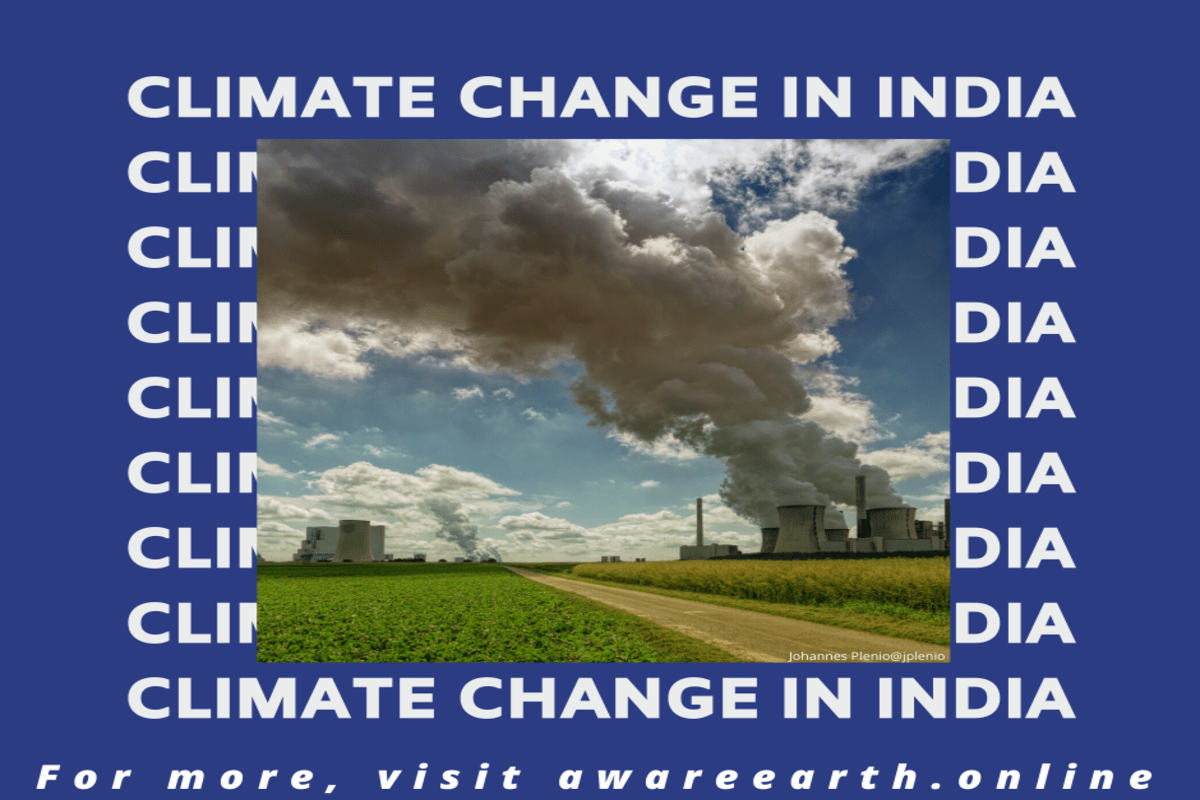People in India are suffering an increase in raging floods, uneven rainfall, melting of glaciers, heat waves. Although, climate isn’t new but, the havoc it has created in recent years is undeniably due to human activities. India is now recognizing the concept of climate change due to human induced changes.
Let’s read further to know more-
Climate change and the initiatives
On December 12, 2015, 195 nations entered into the Paris Agreement that set a goal to limit their individual carbon footprints and restrict global temperature rise to 1.5 degree celsius. India is working toward meeting its commitments under this agreement. Therefore, it faces developmental challenges that call for integration of climate concerns into development policies.
Globally, the conversation around climate change has grown more urgent. Countries have reached a consensus on the dangers posed by rising greenhouse gas levels. But they disagree on the actions that need to be taken to reduce the extent of global warming. This is due to the over dependence on fossil fuels that is not ending.

India and coal-use
According to the US government’s Energy Information Administration, 44 percent of India’s energy came from coal in 2013 with renewables making up only 3 percent.
- India will become second to only China in terms of coal production and the largest importer of coal before 2020, according to a report by the International Energy Agency, a Paris-based intergovernmental agency.
- Coal produces a higher rate of emissions than other fuel sources.
- Yet building solar panels is far more expensive than mining and burning coal.
- Whether these investments in solar will educe carbon emissions is a testy issue.

Introduction of renewable sources: a bleak promise
Prior to approving the Paris agreement, PM Modi pledged to provide light energy in 18,000 poor villages. This was to be done by 2019, through a mix of fossil fuels and renewable sources.
- According to Debajit Palit, an associate director at TERI, solar would likely only power 3,000 of those villages, or roughly 15 percent.
- The other 85 percent would come from the central grid, which is still mostly fueled by coal. That means India will continue developments with high-carbon energy while, it attempts to transition to new technologies.
- The moving of power grid to renewable sources is an important decision. If delayed, it will have disastrous effects.
Accounts of climate change in India
An analysis done by IMD researchers has indicated an increase in disaster potential for instant flooding over central India. Here, the intensity and frequency of heavy and very heavy rainfall have been increasing.
Bihar
Twenty-eight Bihar districts are flood-prone. Of these, 15 are considered extremely flood-prone, according to a report by the state’s disaster management authority. The state’s most severe flood-related disaster occurred in 2008 when the Kosi breached its mud embankment at Kusaha in Nepal, leaving around five million settled in five north Bihar districts homeless for months.
Annual flooding in Bihar accounts for about 30-40 per cent of the flood damage in India and 22.1 per cent of its total flood-affected population, according to the report.
Kerala
As heavy rains pound Kerala and overflowing rivers inundate most of the state, the increasing number of instances of extreme weather events in India have deepened concerns about the impact of climate change.
“Heavy rainfall used to occur in Kerala, but not with such continuity. This time, there has been widespread rain continually for a long time which has not been seen in recent years. However, we have observed that the intensity of daily rainfall is indeed increasing, especially along the western coast and in the north-eastern states,” said Dr D.S. Pai, head, climate prediction group , India Meteorological Department (IMD), Pune.
Loss of life and property
There have been 285 reports of flooding events in India over 1950-2017. This has affected about 850 million people, leaving 19 million homeless and killing about 71,000 people. Severe weather events have caused catastrophic loss of life and property across the country in recent years.
- Uttarakhand is still to recover from the destruction left by flash floods in June 2013.
- Too much rainfall caused floods in Jhelum and Chenab in 2014, causing nearly 400 villages in Kashmir to submerge.
- Chennai bore the brunt next year in November 2015.
- Assam in 2016 and 2019.
- Bihar in 2019 and so on.
- In 2017, Mumbai and Gujarat were shut down forcefully because of record heavy rainfall.
What lies ahead for India
Recent studies shows that our country may face devastating climate change effects, including killer heat waves and severe floods, in the next 80 years. Urgent steps are the need of the hour to reduce greenhouse gas emissions to avert climate change in India and associated risks.
- The dense population of India poses high sensitivity and low resilience to combat climate change. To read more on population, check out- World population day 2020.
- A study, published in the journal ‘Earth Systems and Environment’ last month, suggests that northwestern India is at “particularly high risk” to flooding from snow and glacier melt caused by temperatures projected to rise by the end of the 21st century.
- The increase in summer rainfall, together with increased water in rivers due to glacier melt in summer, may cause severe summer flooding in the future.
- The researchers also forecast killer heat waves over the plains, adding that severe flooding is likely to take place with annual rainfall over India projected to increase under all emission scenarios in the 21st century. This could have serious implications for crops, ecosystems, and population in India.
We need to educate ourselves more on such issues and be part of important life changing discussions. And always remember that-

Let’s take the initiative to be better citizens of the world.
For more articles on Environment please visit Environment : Aware Earth

